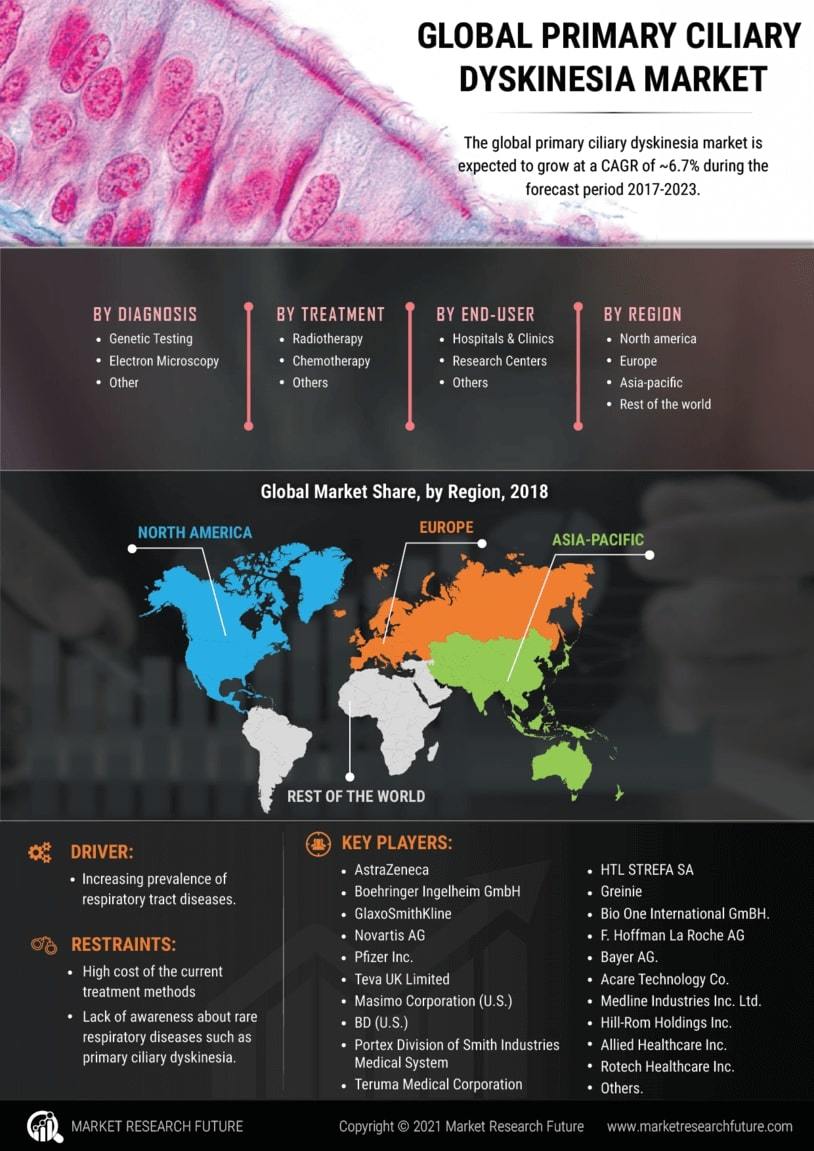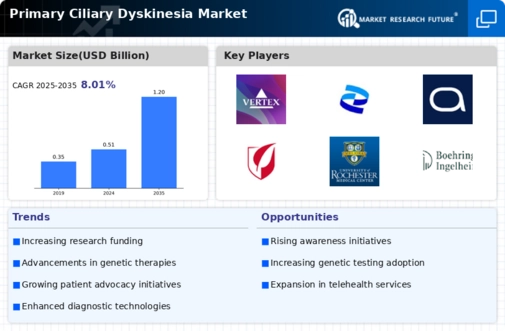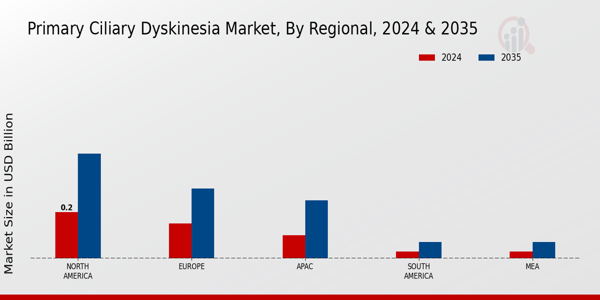Market Growth Projections
The Global Primary Ciliary Dyskinesia Market Industry is projected to experience substantial growth in the coming years. With a market valuation of 0.51 USD Billion in 2024, it is anticipated to reach 1.2 USD Billion by 2035, reflecting a compound annual growth rate (CAGR) of 8.09% from 2025 to 2035. This growth trajectory indicates a rising demand for diagnostic and therapeutic solutions as awareness and understanding of PCD increase globally. The market dynamics are influenced by various factors, including advancements in genetic testing, innovative therapies, and enhanced healthcare infrastructure.
Advancements in Genetic Testing
Technological advancements in genetic testing are transforming the landscape of the Global Primary Ciliary Dyskinesia Market Industry. Innovations such as next-generation sequencing and improved diagnostic methodologies facilitate earlier and more accurate identification of PCD. These advancements not only enhance patient outcomes but also drive market growth by increasing the number of diagnosed cases. As genetic testing becomes more accessible, it is anticipated that the market will expand significantly, potentially reaching a valuation of 1.2 USD Billion by 2035. This growth reflects the increasing reliance on genetic diagnostics in managing rare diseases, including PCD.
Innovative Therapeutic Approaches
The development of innovative therapeutic approaches for Primary Ciliary Dyskinesia is a significant driver of the Global Primary Ciliary Dyskinesia Market Industry. Researchers are exploring novel treatments, including gene therapy and targeted therapies, which may offer more effective management of PCD symptoms. These advancements could lead to improved quality of life for patients and stimulate market growth. As these therapies progress through clinical trials and gain regulatory approval, the market is expected to expand, potentially reaching 1.2 USD Billion by 2035. This evolution in treatment options highlights the ongoing commitment to addressing the unmet needs of PCD patients.
Enhanced Healthcare Infrastructure
The enhancement of healthcare infrastructure globally is a vital factor influencing the Global Primary Ciliary Dyskinesia Market Industry. Improved healthcare facilities and increased access to specialized care are essential for the effective management of PCD. Countries are investing in healthcare systems to provide better diagnostic and treatment options for rare diseases. This investment is likely to facilitate earlier diagnosis and comprehensive patient management, contributing to market growth. As healthcare systems evolve, the market may see a valuation of 0.51 USD Billion in 2024, reflecting the positive impact of infrastructure improvements on patient care.
Growing Awareness and Education Initiatives
The rise in awareness and educational initiatives surrounding Primary Ciliary Dyskinesia plays a pivotal role in the Global Primary Ciliary Dyskinesia Market Industry. Healthcare professionals and patient advocacy groups are actively working to disseminate information about PCD, its symptoms, and treatment options. This heightened awareness is likely to lead to earlier diagnosis and improved patient management, thereby increasing the demand for therapeutic interventions. As a result, the market is projected to experience a compound annual growth rate (CAGR) of 8.09% from 2025 to 2035, reflecting the positive impact of education on patient outcomes and market dynamics.
Increasing Prevalence of Primary Ciliary Dyskinesia
The rising incidence of Primary Ciliary Dyskinesia (PCD) globally is a crucial driver for the Global Primary Ciliary Dyskinesia Market Industry. Recent estimates suggest that PCD affects approximately 1 in 15,000 to 1 in 30,000 live births. This increasing prevalence is likely to elevate the demand for diagnostic and therapeutic options, contributing to market growth. As awareness of PCD improves, more patients are diagnosed, which may lead to a market valuation of 0.51 USD Billion in 2024. This trend underscores the necessity for enhanced healthcare resources and specialized treatment protocols to manage this rare genetic disorder effectively.




















